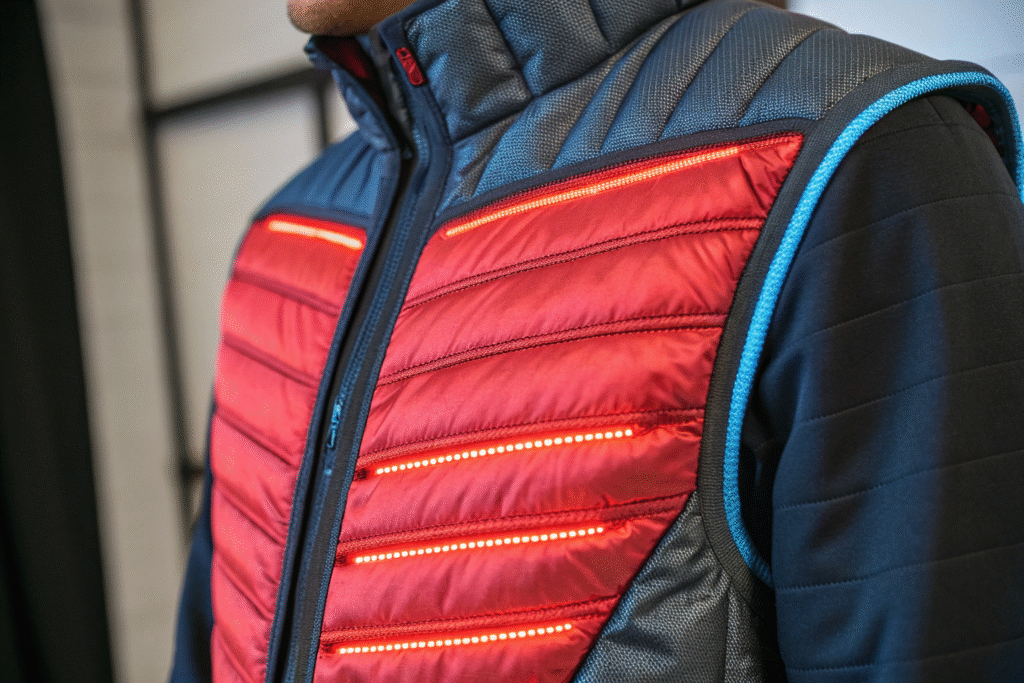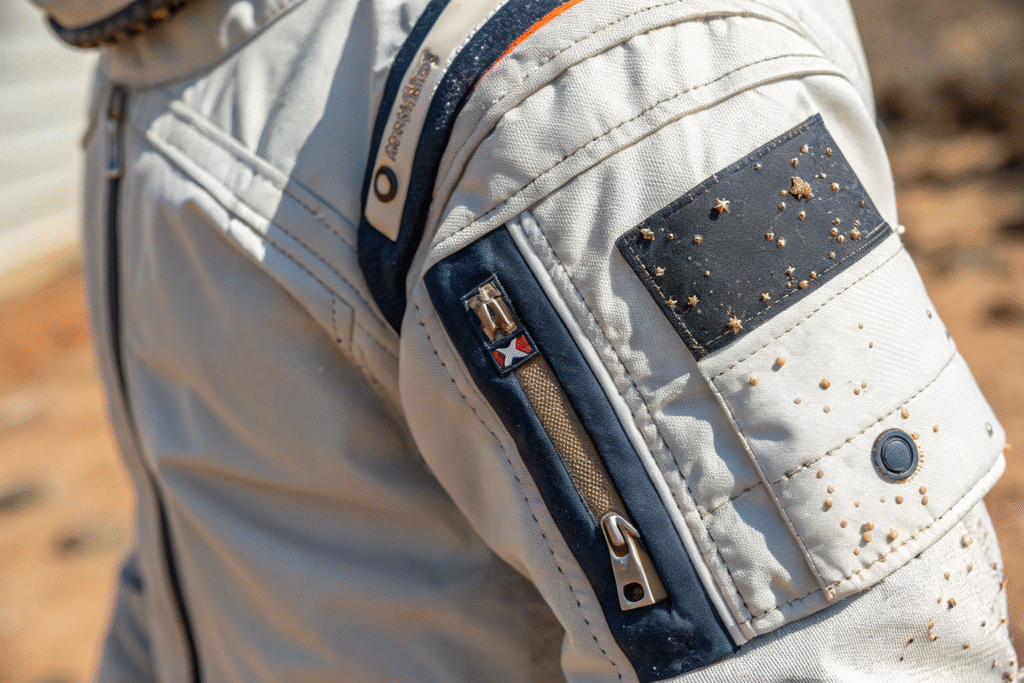When we think about stepping onto a planet beyond our solar system, most of us imagine the vast unknowns of deep space. But before an astronaut even sets foot on an alien surface, one critical factor determines safety and survival: the suit. At the heart of that suit lies fabric. The right material can mean the difference between thriving and barely surviving in hostile exoplanetary environments.
The best fabrics for exoplanetary exploration suits are advanced multi-layered textiles engineered for durability, insulation, radiation protection, and mobility. These fabrics combine synthetics like aramid and Vectran with coatings, membranes, and smart fibers to balance safety and comfort.
The truth is, these fabrics are not just science fiction. They are the product of decades of textile engineering, blending aerospace needs with innovations in fashion, sportswear, and industrial applications. Understanding these materials helps us see the future of exploration and the textile industry’s role in it.
Which Materials Can Withstand Extreme Temperatures?
Astronauts face environments where temperatures swing from hundreds of degrees above to far below freezing. Suit fabrics must shield against both extremes without sacrificing movement or comfort.
High-performance fabrics like aramid, Vectran, and Nextel ceramics withstand these extremes by layering thermal insulation and reflective coatings. They trap body heat in freezing conditions while deflecting dangerous solar radiation in extreme heat.

How Do Thermal Fabrics Protect Astronauts?
Thermal protection begins with insulation. Materials such as Nomex and Nextel ceramic fibers provide resistance to fire and high heat. In cold, aerogels and multilayer insulation keep the body stable. These fabrics are woven in layers that create micro air pockets, locking in warmth without bulk. This system is very similar to the way mountaineering jackets work on Earth, but optimized for harsher swings.
Can Fabrics Adapt to Rapid Climate Shifts?
Yes. Smart fabrics with phase-change materials respond to sudden changes. For instance, Outlast PCM technology adjusts by absorbing and releasing heat. This adaptability is crucial when astronauts move between sunlit and shadowed areas on exoplanets. It prevents overheating and frostbite in minutes. The result is a suit that feels surprisingly stable, even when conditions outside swing wildly.
How Do Fabrics Resist Micrometeorites and Dust?
Exploring alien landscapes comes with dangers beyond temperature: sharp dust, radiation, and micrometeorite impacts. Fabrics cannot tear under pressure, yet they must bend with every movement.
Advanced woven fabrics like Vectran and aramid form puncture-resistant shells, while coatings block abrasive dust particles. These create flexible armor without feeling like rigid metal plates.

Why Is Dust Such a Big Challenge?
On the Moon, lunar dust was already destructive. On exoplanets, dust could be sharper or chemically active. Fabrics like Vectran have incredible abrasion resistance, preventing suit degradation. Multiple woven layers act like armor, ensuring the suit surface stays intact after constant exposure.
Can Fabrics Stop Micrometeorite Damage?
Micrometeorites strike at high speeds. Instead of rigid armor, NASA uses multiple textile layers to absorb and disperse impact. This “whipple shield” concept is adapted into suits using aramid and other ballistic fabrics. When combined with Kevlar, these suits resist punctures while maintaining mobility. It is textile science applied to survival.
What Role Does Flexibility and Comfort Play?
A suit cannot just protect; it must allow astronauts to move, bend, and work for hours. That is where flexibility and comfort come into play.
Elastic fibers, knits, and engineered weaves give astronauts mobility without sacrificing durability. Fabrics balance safety with natural movement, making exploration possible rather than painful.

Can Stretch Fabrics Survive Harsh Conditions?
Modern elastane and spandex blends are already used in aerospace gear. When reinforced with coatings, they resist UV and chemicals. For exoplanets, blends of Spandex with high-strength synthetics create controlled stretch zones. These give astronauts mobility in joints while keeping the torso shielded.
How Do Fabrics Maintain Comfort in Long Missions?
Comfort depends on moisture management and breathability. Fabrics like Gore-Tex membranes allow vapor release but block liquid or dust entry. This prevents sweat build-up, reducing fatigue and skin irritation. Combined with antimicrobial coatings, these fabrics maintain hygiene during long missions without frequent suit changes.
Can Fabrics Protect Against Radiation?
One of the most invisible yet dangerous threats on exoplanets is radiation. Unlike temperature or dust, astronauts cannot feel it, but long exposure is deadly.
Fabrics layered with metallic threads, polyethylene composites, and smart shielding fibers create barriers against cosmic rays and solar storms, allowing safe exploration.

How Do Fabrics Shield Against Cosmic Radiation?
Radiation shielding is about density and layering. Polyethylene blocks protons and cosmic rays better than metals because it has more hydrogen atoms. Some fabrics integrate these polymers into flexible sheets. When layered with aluminum-coated textiles, astronauts get dual protection without rigidity.
Can Fabrics Evolve to Smarter Protection?
Yes. Future fabrics may include nanomaterials that adjust shielding in real time. Research into graphene shows potential for lightweight, radiation-blocking layers. These could integrate into suits, responding dynamically to cosmic events. That future will merge textile innovation with AI-driven monitoring, keeping astronauts safer than ever.
Conclusion
Exploring exoplanets is one of humanity’s boldest dreams, but it starts with something familiar: fabric. The best exploration suits are not heavy metal armor; they are layered textiles engineered for survival. From temperature extremes to radiation, from dust abrasion to comfort, fabrics define safety and success. They are where aerospace meets textile innovation.
At Shanghai Fumao, we understand the power of textiles to shape the future. While we specialize in fabrics for fashion, sportswear, and children’s wear, the same innovation, testing, and sustainability principles drive advanced textiles for aerospace and beyond. If you are ready to co-create the future of fabrics with us, contact our Business Director Elaine at elaine@fumaoclothing.com to start your own custom fabric order.










